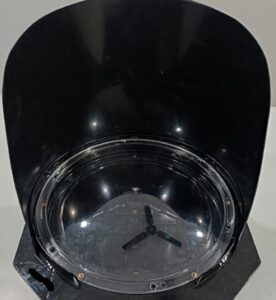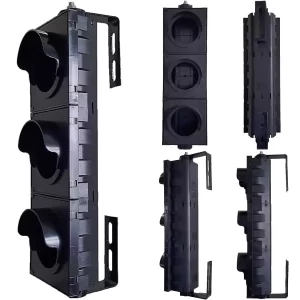Innovations and Trends in Traffic Signal Housing: The Complete Guide
The housing of the traffic signal is an important element that determines the efficiency and safety quality characteristics of urban road management systems. With growing cities aided by advancements in technology, the innovations and trends around traffic signal housing are more critical than they have ever been. This in-depth post will delve into the latest advancements and what urban infrastructure might look like next.
A brief note about Traffic Signal Housing
Firstly, traffic signal housing is the shell or cover that covers all those electrical units inside which work for controlling a red light green light. They are robust housings made to endure extreme harsh environmentals thus protecting the traffic light against frequent replacements due to longterm maintenance. Hence, quality and the way of building traffic signal housings parallel drives how active a street management system becomes.
Improvements in Traffic Signal Housing
1. Smart Technology Integration The integration of smart technology into traffic signal housing is one element that has significantly impacted the face of management. Today, traffic signal housings—those boxes you so often see hanging off the support system—are bristling with sensors and connectivity capabilities. These mechanisms present real-time data collection, communication with central traffic control systems and more. Solve for flow and congestion Dynamic Route-Based Mission uses a ubiquitous, fleet-driven monitoring network that provides traffic predictions accurate within 5 minutes. 2. Sustainable MaterialsAnother important trend is the use of sustainable materials in the production of traffic signal housings. More and more, manufacturers utilise recycled or green materials–such as Aluminium, Polycarbonate etc. This they claim not only decreases environmental impact, but also offers more robustness and corrosion resistance. Additionally, sustainable materials add another step closer to more eco-friendly urban environments. 3. Greater Visibility and Safety Features In addition, advances in visibility and safety features have dramatically helped to shape the designs of traffic signal housings. For this reason, high-intensity LED lights and reflective coatings that can be seen even in bad weather have become standard issue. For instance, having these red and white diagonal rays on both sides of the bars are particularly helpful for fog or rainy conditions,or night light. In this way it guarantees road safety. As a bonus, the use of vandal-resistant materials and tamperproof designs also safeguard traffic signal integrity.
THE FUTURE OF TRAFFIC SIGNAL HOUSING-TRENDS
1. Internet of Things (IoT) ConnectivityMoreover, the trend towards incorporating Internet of Things (IoT) connectivity directly in traffic signal housing is likely to become more prevalent on a go-forward basis. These signals will communicate with other digital platforms including vehicles and pedestrian cross walks, connecting everything for a co-ordinated traffic management system across the city. This may lead to smart city development, where all systems are interconnected and work together as one big system that maintains a high quality of life in the cities.
2. Modular DesignsAdditionally, modular designs are catching on when it comes to traffic signal housing. Composite traffic signal housings are modular, making it easy to replace or upgrade individual components without costly reworking. It decreased maintenance costs and reduced downtime, ensuring the traffic signals were always operational. Therefore, the modular designs have enriched the efficient manner of traffic management at considerable prices.
3. Integration with AV SystemsAnother thing to keep an eye on is the integration of traffic signal housings into autonomous vehicle systems. In the future when self-driving cars start populating our roads, traffic signals will have to talk directly to those vehicles and tell them what they need. This integration will feature transformative level of traffic signal housings that includes smart communication technologies and eventually pave the way for safer roadways.
Conclusion
In summary, the advances and traffic signal enclosure trends are translating to massive enhancements in urban traffic control systems. This technology includes smart tech integration and the utilization of fresh, green methods to give our homes more sustainable sources. And, as we move forward into the future of increasingly smarter and connected urban environments, these new permalight materials signify another step in housings evolution. This is useful information for city planners, engineers and policy makers who work to create better transportation infrastructure.



